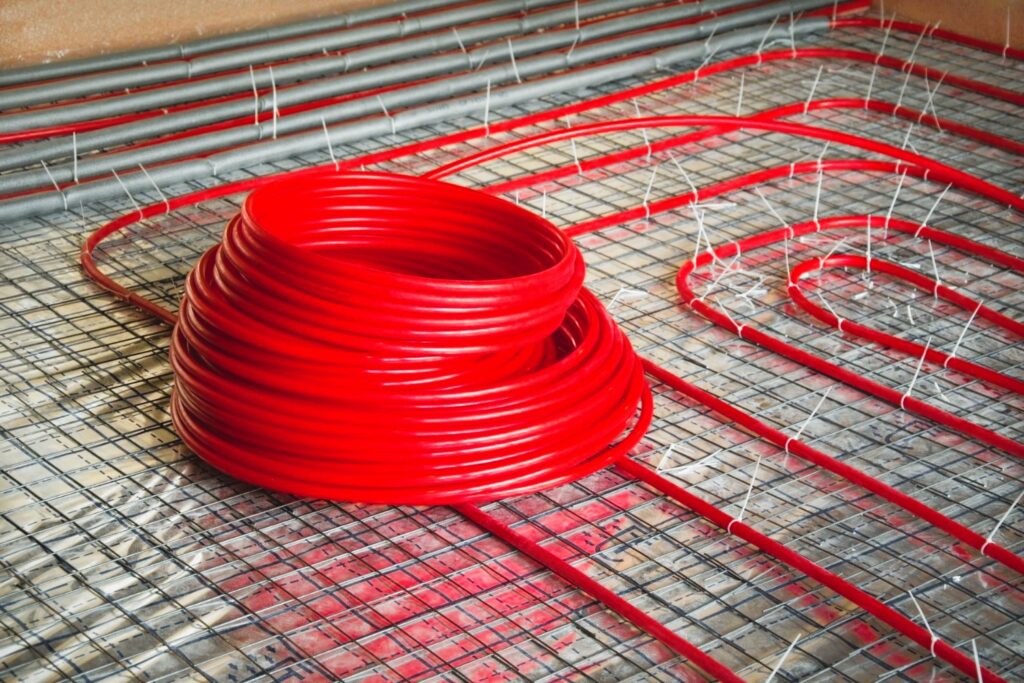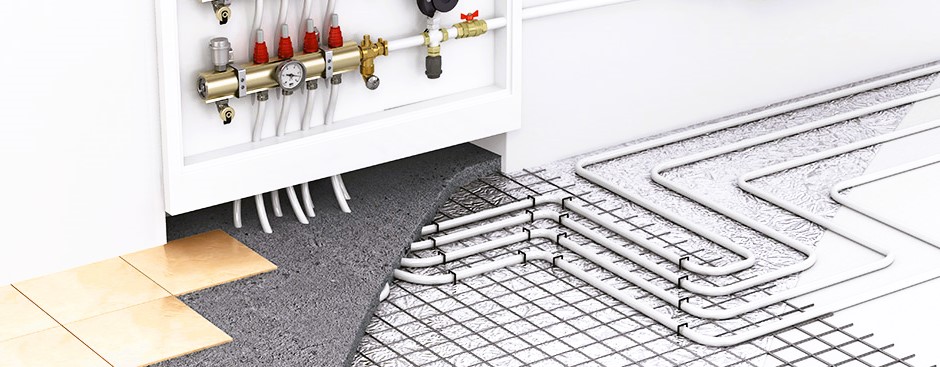Radiant floor heating is an innovative and energy-efficient heating system that provides comfortable warmth from the ground up. It involves the installation of heating elements beneath the floor surface, which radiate heat evenly throughout the room. In this article, we will explore the benefits and working principles of radiant floor heating, as well as its energy efficiency advantages.
1. How Radiant Floor Heating Works:
Radiant floor heating works by utilizing a network of pipes or electric heating elements installed beneath the floor. These pipes or elements heat up and radiate warmth directly to the floor surface, which then warms the surrounding objects and occupants in the room. There are two primary types of radiant floor heating: hydronic and electric.
- Hydronic Radiant Floor Heating: Hydronic systems circulate heated water through a series of tubes installed in the floor. The water is heated using a boiler or other heat source, and it transfers the heat to the floor, providing consistent warmth. Hydronic systems are compatible with various heat sources, including solar energy, geothermal heat pumps, and traditional boilers.
- Electric Radiant Floor Heating: Electric systems use electric heating elements installed in the floor to generate heat. These heating elements, often in the form of electric cables or mats, are connected to a thermostat and power supply. When activated, the heating elements warm up, radiating heat through the floor surface.

2. Benefits of Radiant Floor Heating:
Radiant floor heating offers several advantages over traditional heating systems:
- Comfortable and Even Heat Distribution: Radiant floor heating provides comfortable warmth throughout the entire room. The heat radiates evenly from the floor, eliminating cold spots and drafts commonly associated with forced-air systems.
- Energy Efficiency: Radiant floor heating can be highly energy-efficient. Because the heat is distributed from the ground up, it operates at lower water temperatures compared to traditional heating systems. This lower operating temperature results in reduced energy consumption and potentially lower utility bills. Window treatment for privacy and energy efficiency, read more here.
- Improved Indoor Air Quality: Unlike forced-air systems that circulate dust, allergens, and dry out the air, radiant floor heating does not rely on air movement. This helps maintain better indoor air quality and reduces the risk of allergies or respiratory problems.
- Design Flexibility: Radiant floor heating can be installed in various types of flooring, including tile, stone, hardwood, and laminate. It is compatible with different room layouts and architectural designs, providing flexibility in heating solutions without compromising aesthetics.
3. Energy Efficiency and Radiant Floor Heating:

Radiant floor heating is inherently energy-efficient due to its operating principles:
- Reduced Heat Loss: Radiant floor heating minimizes heat loss by radiating heat directly to the floor surface and objects in the room. This reduces heat loss through windows, walls, and ceilings, resulting in energy savings.
- Zoning Capability: Radiant floor heating systems can be divided into zones, allowing independent temperature control for different areas of the home. This zoning capability enables customized heating and prevents unnecessary energy consumption in unoccupied spaces.
- Integration with Renewable Energy Sources: Radiant floor heating systems can integrate with renewable energy sources, such as solar panels or geothermal heat pumps. This synergy further enhances energy efficiency and sustainability by utilizing clean and renewable energy to heat the floor.
For more information on radiant floor heating, you can refer to the Wikipedia.
Radiant floor heating offers energy-efficient and comfortable warmth from the ground up. Whether you choose hydronic or electric systems, the benefits of radiant floor heating extend beyond energy efficiency, providing an enjoyable and efficient heating solution for your home.
